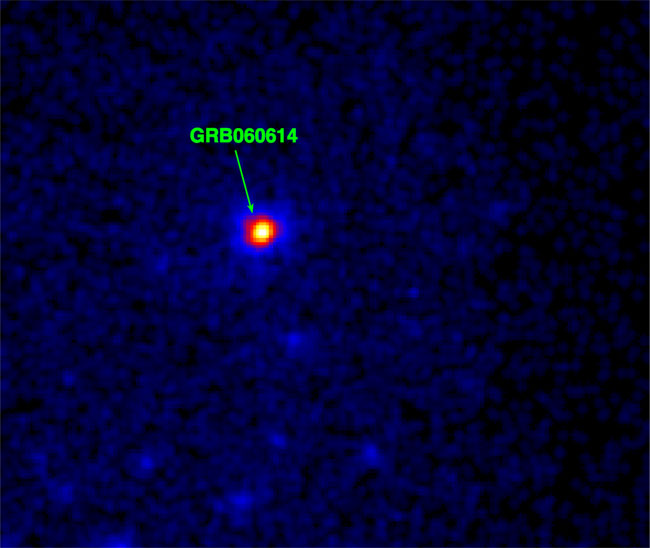
As a parting swan song to the universe, most massive stars explode in a tremendous burst of light and energy when they die. But astronomers have detected a new class of enigmatic stars that appear to fade away quietly, and in the dark.
The discoveries, detailed in four separate studies in the Dec. 21 issue of the journal Nature, could reveal a new way stars exit the universal stage.
Until now, scientists had thought stars expire in only one of two ways. When stars up to eight times more massive than our Sun run out of fuel, their outer layers slough away to leave behind a smoldering stellar corpse, called a white dwarf.
Heftier stars above this mass-threshold die more violently. When these stars run out of fuel, their cores collapse, triggering titanic explosions called supernovas that can fling several solar masses worth of material into space. After the blast, what's left in place of the star is either a neutron star or a black hole.
Recent studies have linked supernova explosions to luminous, energetic events called gamma-ray bursts (GRBs), particularly those lasting longer than two seconds. These so-called "long" GRBs are a kind of death knoll for massive stars and are emitted shortly before the stars explode.
In June, NASA's Swift telescope detected a long GRB in a dwarf galaxy 1.6 billion light-years away in the constellation Indus. Dubbed GRB 060614, it lasted for 102 seconds. Astronomers tipped off to the event quickly aimed their ground telescopes at GRB 060614 [image], expecting to see a supernova.
But nothing happened.
Get the Space.com Newsletter
Breaking space news, the latest updates on rocket launches, skywatching events and more!
In one case, astronomers using the European Southern Observatory's Very Large Telescope kept vigil for 50 days. "Despite our deep monitoring, no rebrightening due to a supernova was seen," said Gianpiero Tagliaferri, an astronomer at the Observatory of Brera in Italy who was involved in one of the studies.
The massive star's "dark" death puzzled astronomers. "It is a bit like not hearing the thunder from a nearby storm when one could see a very long-lasting flash," said Johan Fynbo of the DARK Cosmology Center at the Niels Bohr Institute of Copenhagen University in Denmark.
Fynbo's team had observed another long GRB one month before, with similar results. Called GRB 060505 [image], it occurred in a small spiral galaxy and lasted only four seconds.
Together, GRB 060614 and GRB 060505 suggest there is another road to oblivion that massive stars can take, an exit that does not involve a supernova explosion.
"It's easy to explain away one of these anomalous events as a fluke, but two strange events give our claim some oomph," said Joshua Bloom, an astronomer at the University of California, Berkeley involved in one of the studies. "These events are observational threats to the one-to-one association between long bursts and supernovae."
One possible explanation is that some massive stars bypass the supernova phase completely in death, letting out only a long gamma ray sigh before collapsing immediately into a black hole. In this scenario, "all the material that is usually ejected in a supernova explosion would then fall back and be swallowed," explained Guido Chincarini, an astronomer at the University of Milano-Bicocca in Italy, who was on one of the teams studying GRB 060614.
Another possibility is that the new type of long GRB is produced by a cosmic merger of some sort. For example, collisions between two neutron stars or a neutron star and a black hole also produce GRBs.
However, these GRBs are typically much more fleeting, lasting less than 2 seconds, and they also tend to be much less energetic.
"Some unknown process must be at play, which we have presently no clue," said study team member Massimo Della Valle of the Osservatorio Astrofisico di Arcetri in Firenze, Italy. "Either it is a new kind of merger which is able to produce long bursts, or a new kind of stellar explosion in which matter can't escape the black hole."
- Top 10 Star Mysteries
- Gamma Ray Bursts and Supernovae
- New Life in Dead Star: Supernova 'Changing Right Before Our Eyes'
- Stellar Sound Waves Set Off Supernovas
Join our Space Forums to keep talking space on the latest missions, night sky and more! And if you have a news tip, correction or comment, let us know at: community@space.com.
Ker Than is a science writer and children's book author who joined Space.com as a Staff Writer from 2005 to 2007. Ker covered astronomy and human spaceflight while at Space.com, including space shuttle launches, and has authored three science books for kids about earthquakes, stars and black holes. Ker's work has also appeared in National Geographic, Nature News, New Scientist and Sky & Telescope, among others. He earned a bachelor's degree in biology from UC Irvine and a master's degree in science journalism from New York University. Ker is currently the Director of Science Communications at Stanford University.












